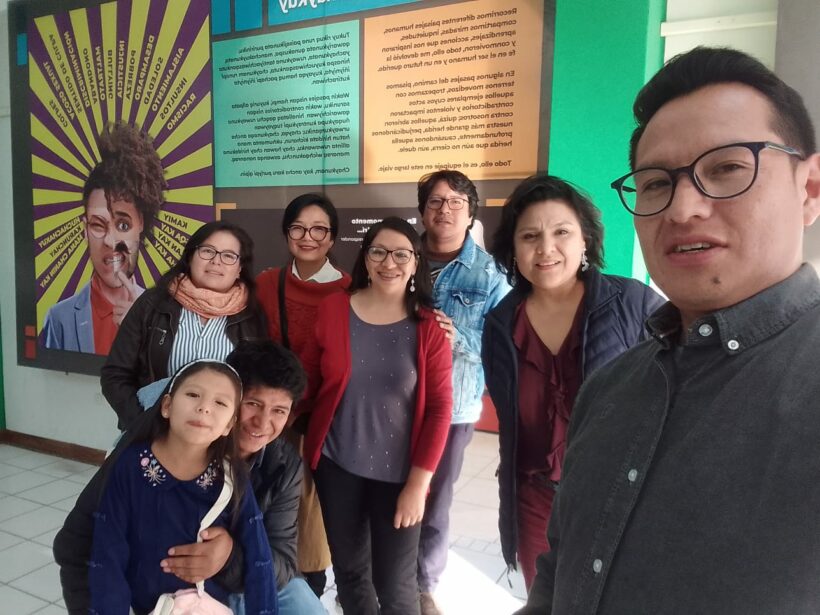The exhibition Peace and Active Nonviolence Now! has moved to the city of Huancayo, in central Peru, and has been on display since 15 July at the Instituto de la Juventud y Cultura de la Ciudad Incontrastable (Institute of Youth and Culture of the Incontrastable City).
After a four-month season at the MUNABA (National Museum of Anthropology, Biodiversity, Agriculture and Food), it went on to the VII FIL (International Book Fair) in Huancayo, where it was very well received by the public. Today, the exhibition is on display at the Instituto de la Juventud y Cultura Huancayo, with a bilingual version (Spanish – Quechua).
The organisers of the Centro de Estudios Humanistas Nueva Civilización, who put on the exhibition in alliance with the Provincial Municipality of Huancayo and the Instituto de la Juventud y Cultura Huancayo say: “There are three stations that offer you exercises of reflection and encounter with yourself, reconciliation with life and progress in overcoming suffering.
 The texts are written in allegorical language, so everyone can interpret them according to their own experiences. There is a script, one guides the participants through these three stations.
The texts are written in allegorical language, so everyone can interpret them according to their own experiences. There is a script, one guides the participants through these three stations.
The idea is to unveil perhaps that experience of violence that you may have had yesterday or a long time ago, and if that marks me, therefore conditions my actions in human relations; because the experience may have been so painful that sometimes it struggles to come out and sometimes it comes out as revenge, as aggression, as mistrust, sometimes it comes out as indifference to the pain of others, however you want to interpret it.
So, what we do is invite them to connect with that violence and accept that one has been violated, it is painful to reveal it, and that is what we do.
At another point in the season, and I think it’s even sadder and more painful to accept that just as you have been violated, you have also violated others. And that puts you on an equal footing with the other. And it puts us all on the same level. “Well, I have been assaulted, violated at some point, but I have also violated”.

And we don’t leave them there, because in the third station, we give small tools, such as the guided experience of Reconciliation, we identify tensions, because, let’s say, remembering those experiences has an emotional impact on acting, and we try to clear them. You have a small act of sticking a sticker, writing down that negative suffering, and with that you remove it, so to speak, by tasting it.
Finally, with the guided experience, we would say that it is more than “remove it and vote”, we would say that it is a “reconciliation”, an integration. “I integrate that this was part of my life, but that it can act in another way, that is to say that it does not condition me negatively, but quite the contrary, because now I go through the world taking care of my relationships, trying to treat others as I would like to be treated.










